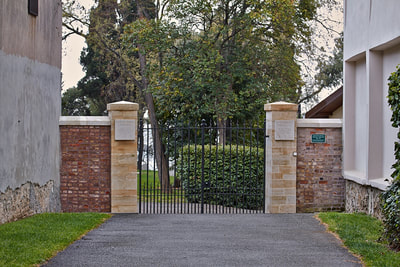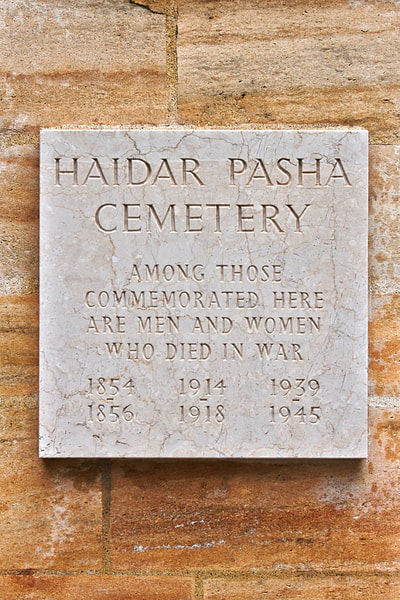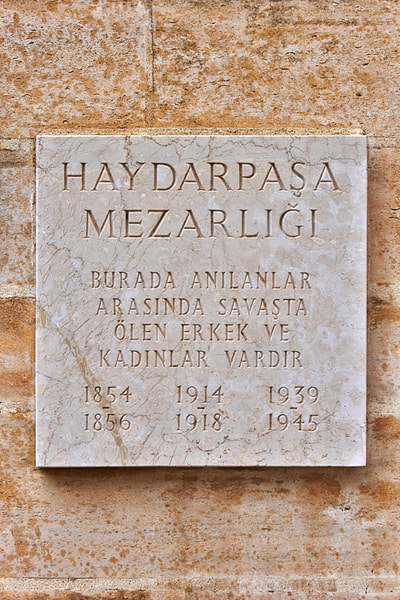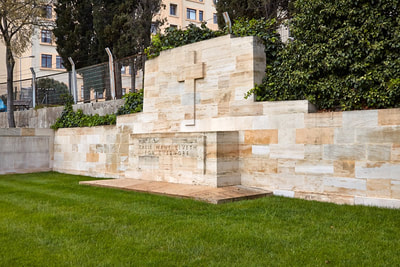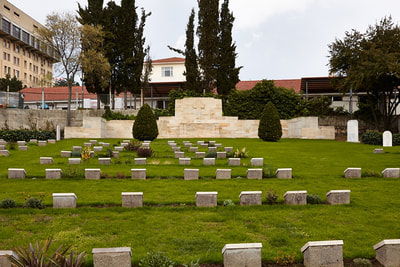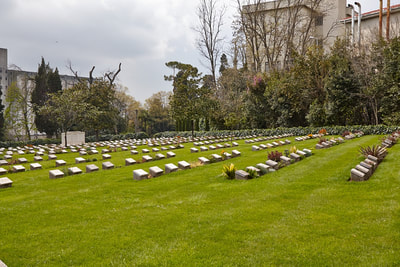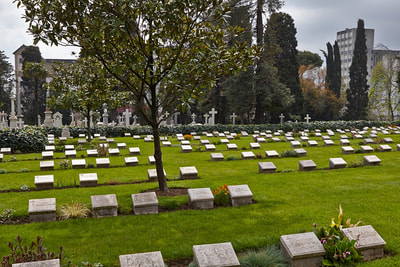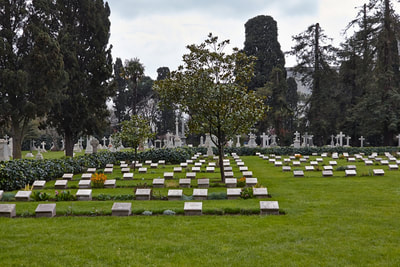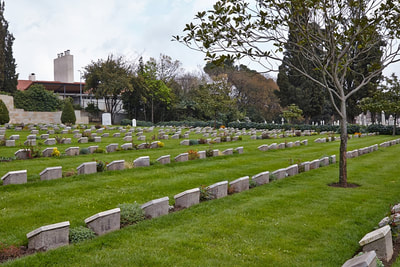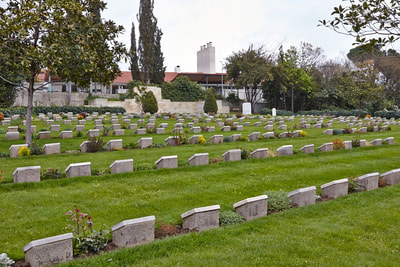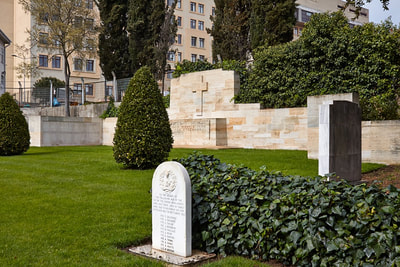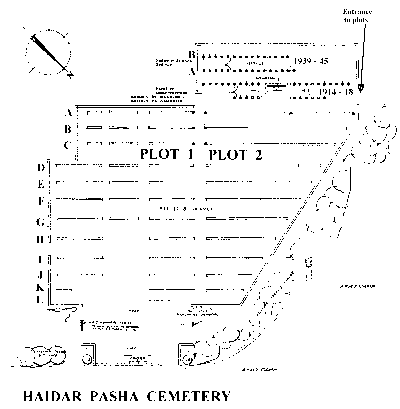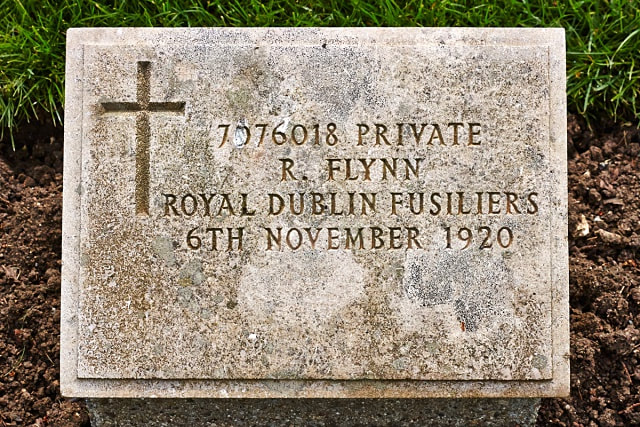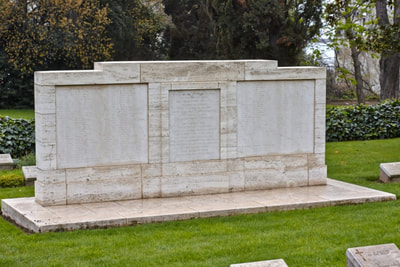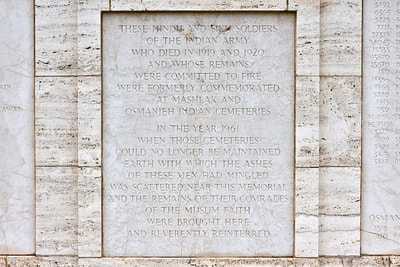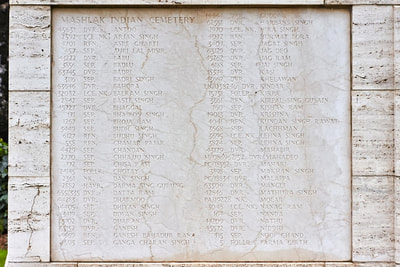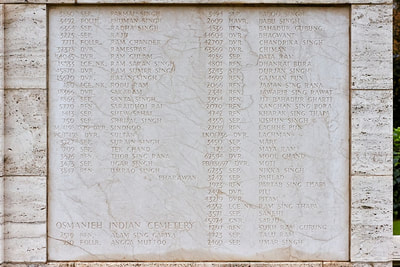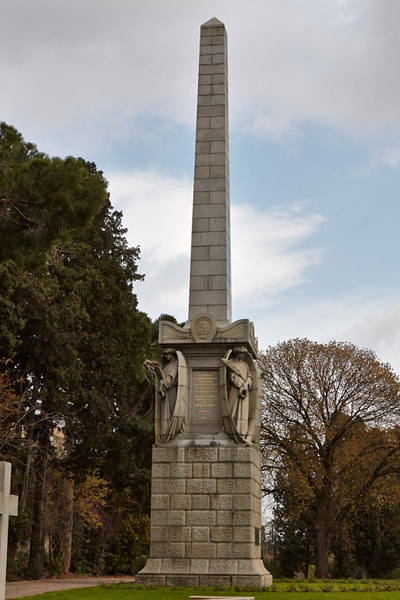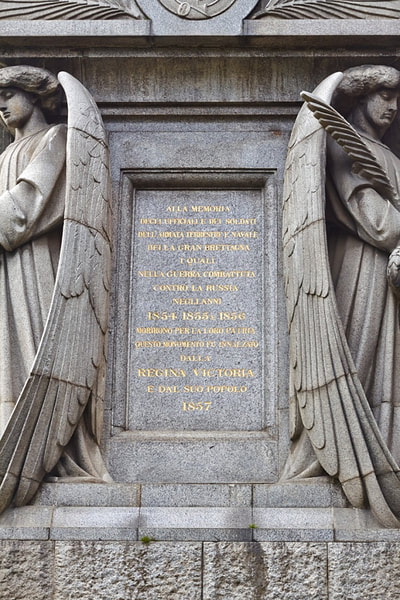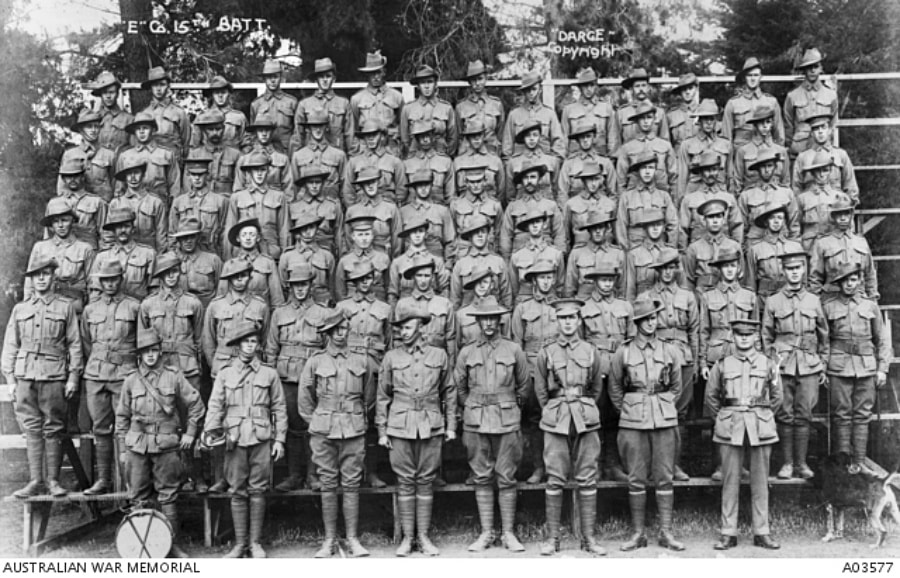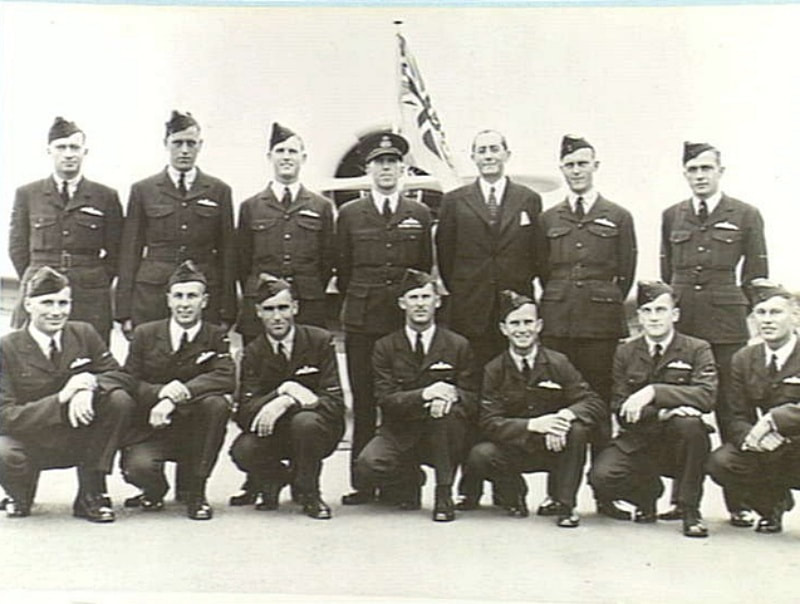HAIDAR PASHA CEMETERY
Istanbul
Turkey
Location Information
Haidar Pasha is a suburb of Istanbul between Scutari (Uskudar) and Kadikoy on the Asiatic side of the Bosphoros. The cemetery is on high ground behind the Haidar Pasha pier head and railway station.
Take the ferry from Kadikoy, near the Galata Bridge, to Haidar Pasha pier head and railway station, which is about 275 metres further from the old railway station.
Turn left through the bus station in the direction of the mosque with twin minarets. With the mosque to your left, you will see steps on your right leading up to the Kadikoy Rihtimi Cad Road. Turn left (northwards) along this road (passing over the railway lines) and continue for approximately 700 metres.
At the traffic lights turn left down towards the main entrance to the cemetery which is accessed by a large path to the right hand side as you face the military hospital gate. Soldiers are usually present at the entrance to the hospital in order to check all vehicles entering the military area. Please be aware that the main access path is easily missed because taxis frequently block the view. A small chain is placed across the entrance to the path in order to prevent access by vehicles. However the cemetery is very easy to access by pedestrians and the disabled.
The main entrance to the cemetery is open daily from 8am to 9pm. Access is via the main entrance only. Please note there is a rear gate to the cemetery from the railway side but this is kept locked for security reasons. Visitors should access the cemetery using the main entrance as described above.
Please be aware that the main access path is easily missed because taxis frequently block the view. A small chain is placed across the entrance to the path in order to prevent access by vehicles. However, the cemetery is very easy to access by pedestrians and the disabled.
Visiting Information
The main entrance to the cemetery is open daily from 8.00 am to 5.00 pm. Access is via the main entrance only.
Please note there is a rear gate to the cemetery from the railway side but this is kept locked for security reasons.
Visitors should access the cemetery using the main entrance as described above.
Historical Information
HAIDAR PASHA CEMETERY was given by the Turkish Government to the British Government in 1855, and contains about six thousand graves of the Crimean War, mostly the result of a cholera epidemic in Istanbul. An imposing grey granite obelisk erected by the British Government of that era commemorates the British dead. In 1867 the cemetery was made available for British civilian burials, and there is a separate section for such graves. During the First World War the cemetery was used by the Turks for the burial of Commonwealth prisoners of war and after the Armistice, when Istanbul was occupied, further burials were made, mainly from No.82 General Hospital. In addition, 119 graves were brought in from the following smaller cemeteries:- Bostandjik Moslem Cemetery, Eregli Armenian Cemetery, Ferikoi Protestant Cemetery, Ismid Latin Catholic Cemetery, Karaman Cemetery, Kars British and Russian Cemeteries, Mashlak Moslem Cemetery, Osmanieh Moslem Cemetery, Prinkipo Roman Catholic Cemetery and San Stefano French Cemetery.
During the Second World War, Turkey retained her neutrality and those Commonwealth servicemen buried there were mainly men taken prisoner during operations in the Aegean, who died while attempting to escape from camps where they awaited transport to Germany and Italy, and whose bodies were washed up on the Turkish coast.
The war graves plot contains 407 Commonwealth burials of the First World War, 60 of them unidentified. Second World War burials number 39, 14 of them unidentified.
Also within the cemetery, which the Commission maintains as a whole, are about 6,000 Crimean graves, mostly unmarked, and numerous non war military and civilian graves and memorials.
Within the war graves plot stands the HAIDAR PASHA CREMATION MEMORIAL, which commemorates 122 soldiers of the Indian Army who died in 1919 and 1920 who were originally commemorated at Mashiak and Osmanieh Cemeteries. In 1961 when these cemeteries could no longer be maintained, the ashes of the Hindus, whose remains were cremated in accordance with their faith, were scattered near this memorial, while the remains of their comrades of the Muslim faith were brought here and re-interred.
The war graves plot also contains the HAIDAR PASHA MEMORIAL, which was erected to commemorate more than 30 Commonwealth servicemen of the First World War who died fighting in South Russia, Georgia and Azerbaijan, and in post Armistice operations in Russia and Transcaucasia, whose graves are not known.
An Addenda panel was later added to commemorate Commonwealth casualties who are buried in cemeteries in South Russia and Transcaucasia whose graves can no longer be maintained. There are now over 100 Commonwealth casualties commemorated by the Memorial.
Haidar Pasha is a suburb of Istanbul between Scutari (Uskudar) and Kadikoy on the Asiatic side of the Bosphoros. The cemetery is on high ground behind the Haidar Pasha pier head and railway station.
Take the ferry from Kadikoy, near the Galata Bridge, to Haidar Pasha pier head and railway station, which is about 275 metres further from the old railway station.
Turn left through the bus station in the direction of the mosque with twin minarets. With the mosque to your left, you will see steps on your right leading up to the Kadikoy Rihtimi Cad Road. Turn left (northwards) along this road (passing over the railway lines) and continue for approximately 700 metres.
At the traffic lights turn left down towards the main entrance to the cemetery which is accessed by a large path to the right hand side as you face the military hospital gate. Soldiers are usually present at the entrance to the hospital in order to check all vehicles entering the military area. Please be aware that the main access path is easily missed because taxis frequently block the view. A small chain is placed across the entrance to the path in order to prevent access by vehicles. However the cemetery is very easy to access by pedestrians and the disabled.
The main entrance to the cemetery is open daily from 8am to 9pm. Access is via the main entrance only. Please note there is a rear gate to the cemetery from the railway side but this is kept locked for security reasons. Visitors should access the cemetery using the main entrance as described above.
Please be aware that the main access path is easily missed because taxis frequently block the view. A small chain is placed across the entrance to the path in order to prevent access by vehicles. However, the cemetery is very easy to access by pedestrians and the disabled.
Visiting Information
The main entrance to the cemetery is open daily from 8.00 am to 5.00 pm. Access is via the main entrance only.
Please note there is a rear gate to the cemetery from the railway side but this is kept locked for security reasons.
Visitors should access the cemetery using the main entrance as described above.
Historical Information
HAIDAR PASHA CEMETERY was given by the Turkish Government to the British Government in 1855, and contains about six thousand graves of the Crimean War, mostly the result of a cholera epidemic in Istanbul. An imposing grey granite obelisk erected by the British Government of that era commemorates the British dead. In 1867 the cemetery was made available for British civilian burials, and there is a separate section for such graves. During the First World War the cemetery was used by the Turks for the burial of Commonwealth prisoners of war and after the Armistice, when Istanbul was occupied, further burials were made, mainly from No.82 General Hospital. In addition, 119 graves were brought in from the following smaller cemeteries:- Bostandjik Moslem Cemetery, Eregli Armenian Cemetery, Ferikoi Protestant Cemetery, Ismid Latin Catholic Cemetery, Karaman Cemetery, Kars British and Russian Cemeteries, Mashlak Moslem Cemetery, Osmanieh Moslem Cemetery, Prinkipo Roman Catholic Cemetery and San Stefano French Cemetery.
During the Second World War, Turkey retained her neutrality and those Commonwealth servicemen buried there were mainly men taken prisoner during operations in the Aegean, who died while attempting to escape from camps where they awaited transport to Germany and Italy, and whose bodies were washed up on the Turkish coast.
The war graves plot contains 407 Commonwealth burials of the First World War, 60 of them unidentified. Second World War burials number 39, 14 of them unidentified.
Also within the cemetery, which the Commission maintains as a whole, are about 6,000 Crimean graves, mostly unmarked, and numerous non war military and civilian graves and memorials.
Within the war graves plot stands the HAIDAR PASHA CREMATION MEMORIAL, which commemorates 122 soldiers of the Indian Army who died in 1919 and 1920 who were originally commemorated at Mashiak and Osmanieh Cemeteries. In 1961 when these cemeteries could no longer be maintained, the ashes of the Hindus, whose remains were cremated in accordance with their faith, were scattered near this memorial, while the remains of their comrades of the Muslim faith were brought here and re-interred.
The war graves plot also contains the HAIDAR PASHA MEMORIAL, which was erected to commemorate more than 30 Commonwealth servicemen of the First World War who died fighting in South Russia, Georgia and Azerbaijan, and in post Armistice operations in Russia and Transcaucasia, whose graves are not known.
An Addenda panel was later added to commemorate Commonwealth casualties who are buried in cemeteries in South Russia and Transcaucasia whose graves can no longer be maintained. There are now over 100 Commonwealth casualties commemorated by the Memorial.
|
Identified Casualties in Cemetery
World War One United Kingdom 304 India 28 Australia 12 New Zealand 3 America 1 German 1 Russian 1 |
Commemorated on Memorial
World War One United Kingdom 103 India 5 Commemorated on Cremation Memorial World War One India 122 |
Identified Casualties in Cemetery
World War Two
United Kingdom 24
Australian 1
Cemetery pictures © Geerhard Joos
World War Two
United Kingdom 24
Australian 1
Cemetery pictures © Geerhard Joos
Haidar Pasha Cemetery and Memorial
(The memorial is a list of 108 names located to the left of the cross)
Shot at Dawn
7076018 Private Richard Flynn, 2nd Bn. Royal Dublin Fusiliers, executed for murder 6th November 1920. Plot I. J. 5.
7076018 Private Richard Flynn, 2nd Bn. Royal Dublin Fusiliers, executed for murder 6th November 1920. Plot I. J. 5.
Cremation Memorial and 1854 -1856 Crimean Memorial
Group portrait of officers and men of E Company, 15th Battalion.
Identified back row, left to right:
Unidentified; 730 Private (Pte) James Edward Courtney; S. Smith; 755 Lance Corporal (L/Cpl) Kenneth William Kendall; 710 L/Cpl Edward Ashton Kirby (killed in action at Gallipoli 15 June 1915); 755 Pte Francis Milton Paterson (killed in action at Gallipoli 14 May 1915); 769 Pte Kenneth Hugh McLeod (killed in action at Gallipoli 3 May 1915); 781 Pte Charles Augustus Siddons; 768 Pte Ronald McLeod (died of disease at Gallipoli 10 July 1915); 740 Pte Percy Davis (killed in action in France 4 July 1918); unidentified; 764 Alexander George McKay; 765 Pte Thomas Aubrey McKay; 747 Pte John Howard Fielding (killed in action at Gallipoli 1 May 1915).
Fifth row, left to right:
805 Pte Charles Edward Lionel West; 715 Pte Alfred John Alcock; 792 Pte John Carlisle Alvin Smith (killed in action at Gallipoli 8 August 1915); unidentified; 1816 Pte Ernest Ivey Robisson Coffey (killed in action at Gallipoli 8 August 1915); unidentified; 786 Pte Reginald George Hornby Schofield (killed in action at Gallipoli 24 May 1915); 749 Pte Henry George Hughes; 807 Pte William James Webb; 772 Pte Robert Thomas Owens; H. Vizer; 789 Pte Henry Leighton Lewis Smith; 736 Pte Ethlyn Cyril Dunstan; 751 Pte William Hogben (died of wounds at Gallipoli 17 August 1915).
Fourth row, left to right:
802 Pte Oswald Stewart Wemyss (killed in action at Gallipoli 29 April 1915); 723 Pte Percy Walter Boston (killed in action at Gallipoli 10 May 1915); 721 Pte Leslie Keith Brayley; 754 Pte James Merson Kidner (died of wounds received at Gallipoli 7 May 1915); 741 Pte Claude Arthur Daniel (killed in action at Gallipoli 3 May 1915); 780 Pte Thomas Terance Rodgers; 729 Pte Sydney Cresswell (killed in action at Gallipoli 8 August 1915); 818 Pte Leonard Lewis Daniel; 753 Pte Alfred Jackson (true name Henry Little - died of disease in England 23 October 1918); 776 Pte Francis Evan Perrett (killed in action at Gallipoli 3 May 1915); C. Gibson; 790 Pte Gordon Smith (died of wounds in France 8 September 1918); 816 Pte Stanley Clifford Cousens (killed in action in France 9 August 1916); 748 Pte Frederick Merton Heathcote.
Third row, left to right:
762 Pte Joseph Masson (died of wounds at Gallipoli 20 May 1915); 759 Pte Ernest Ross Martin (died at Gallipoli 24 May 1915); unidentified; 796 Pte Albany Smale; 806 Pte Albert Eugene Warbey (alias Warby); 731 Pte Albert Castley; 773 Pte Patrick O'Connor; 739 Pte Victor Daley; 750 Pte Charles Harold Hodsdon (died in hospital in Constantinople while POW 21 January 1916); 788 Pte Peter Simpson; 745 Pte John Fraser (killed in action at Gallipoli 6 May 1915); 727 Pte Francis Horace Cave; 744 Pte Henry Edelsten (died of wounds in France 30 August 1916); 701 Colour Sergeant (Sgt) William John Powell.
Second row, left to right:
706 Corporal (Cpl) William Mackay; 711 L/Cpl Henry Alfred Eibel (killed in action in France 11 April 1917); 767 Pte William James Herbert McGarry; 793 Pte John Gordon Scouller (killed in action at Gallipoli 9 May 1915); 712 L/Cpl Walter Seccombe (killed in action at Gallipoli 10 May 1915); 716 Pte Edward Charles Bartholomew; unidentified; 752 Pte Robert Inman; 722 Pte Arthur Beesley; 724 Pte Frederick Blake (killed in action at Gallipoli 8 August 1915); 746 Pte Norman Fuhrman (killed in action in France 11 April 1917); 702 Sgt Joseph Edward Sparks; 703 Sgt William James Taffe; 705 Cpl Edward Melia (killed in action at Gallipoli 2 May 1915).
Front row, left to right:
742 Pte Alfred Elliott; 798 Pte Arthur Norman Tweedale; 704 Sgt James Carter Treherne; 813 Sgt Casimar Edric Pennefather Ryan; 770 Lance Sgt James Stephen McNeill; Second Lieutenant (2Lt) Thomas Robertson (killed in action at Gallipoli 27 April 1915); Captain Hugh Quinn (killed in action at Gallipoli 29 May 1915); 2Lt Francis Leofric Armstrong (killed in action at Gallipoli 10 May 1915).
Identified back row, left to right:
Unidentified; 730 Private (Pte) James Edward Courtney; S. Smith; 755 Lance Corporal (L/Cpl) Kenneth William Kendall; 710 L/Cpl Edward Ashton Kirby (killed in action at Gallipoli 15 June 1915); 755 Pte Francis Milton Paterson (killed in action at Gallipoli 14 May 1915); 769 Pte Kenneth Hugh McLeod (killed in action at Gallipoli 3 May 1915); 781 Pte Charles Augustus Siddons; 768 Pte Ronald McLeod (died of disease at Gallipoli 10 July 1915); 740 Pte Percy Davis (killed in action in France 4 July 1918); unidentified; 764 Alexander George McKay; 765 Pte Thomas Aubrey McKay; 747 Pte John Howard Fielding (killed in action at Gallipoli 1 May 1915).
Fifth row, left to right:
805 Pte Charles Edward Lionel West; 715 Pte Alfred John Alcock; 792 Pte John Carlisle Alvin Smith (killed in action at Gallipoli 8 August 1915); unidentified; 1816 Pte Ernest Ivey Robisson Coffey (killed in action at Gallipoli 8 August 1915); unidentified; 786 Pte Reginald George Hornby Schofield (killed in action at Gallipoli 24 May 1915); 749 Pte Henry George Hughes; 807 Pte William James Webb; 772 Pte Robert Thomas Owens; H. Vizer; 789 Pte Henry Leighton Lewis Smith; 736 Pte Ethlyn Cyril Dunstan; 751 Pte William Hogben (died of wounds at Gallipoli 17 August 1915).
Fourth row, left to right:
802 Pte Oswald Stewart Wemyss (killed in action at Gallipoli 29 April 1915); 723 Pte Percy Walter Boston (killed in action at Gallipoli 10 May 1915); 721 Pte Leslie Keith Brayley; 754 Pte James Merson Kidner (died of wounds received at Gallipoli 7 May 1915); 741 Pte Claude Arthur Daniel (killed in action at Gallipoli 3 May 1915); 780 Pte Thomas Terance Rodgers; 729 Pte Sydney Cresswell (killed in action at Gallipoli 8 August 1915); 818 Pte Leonard Lewis Daniel; 753 Pte Alfred Jackson (true name Henry Little - died of disease in England 23 October 1918); 776 Pte Francis Evan Perrett (killed in action at Gallipoli 3 May 1915); C. Gibson; 790 Pte Gordon Smith (died of wounds in France 8 September 1918); 816 Pte Stanley Clifford Cousens (killed in action in France 9 August 1916); 748 Pte Frederick Merton Heathcote.
Third row, left to right:
762 Pte Joseph Masson (died of wounds at Gallipoli 20 May 1915); 759 Pte Ernest Ross Martin (died at Gallipoli 24 May 1915); unidentified; 796 Pte Albany Smale; 806 Pte Albert Eugene Warbey (alias Warby); 731 Pte Albert Castley; 773 Pte Patrick O'Connor; 739 Pte Victor Daley; 750 Pte Charles Harold Hodsdon (died in hospital in Constantinople while POW 21 January 1916); 788 Pte Peter Simpson; 745 Pte John Fraser (killed in action at Gallipoli 6 May 1915); 727 Pte Francis Horace Cave; 744 Pte Henry Edelsten (died of wounds in France 30 August 1916); 701 Colour Sergeant (Sgt) William John Powell.
Second row, left to right:
706 Corporal (Cpl) William Mackay; 711 L/Cpl Henry Alfred Eibel (killed in action in France 11 April 1917); 767 Pte William James Herbert McGarry; 793 Pte John Gordon Scouller (killed in action at Gallipoli 9 May 1915); 712 L/Cpl Walter Seccombe (killed in action at Gallipoli 10 May 1915); 716 Pte Edward Charles Bartholomew; unidentified; 752 Pte Robert Inman; 722 Pte Arthur Beesley; 724 Pte Frederick Blake (killed in action at Gallipoli 8 August 1915); 746 Pte Norman Fuhrman (killed in action in France 11 April 1917); 702 Sgt Joseph Edward Sparks; 703 Sgt William James Taffe; 705 Cpl Edward Melia (killed in action at Gallipoli 2 May 1915).
Front row, left to right:
742 Pte Alfred Elliott; 798 Pte Arthur Norman Tweedale; 704 Sgt James Carter Treherne; 813 Sgt Casimar Edric Pennefather Ryan; 770 Lance Sgt James Stephen McNeill; Second Lieutenant (2Lt) Thomas Robertson (killed in action at Gallipoli 27 April 1915); Captain Hugh Quinn (killed in action at Gallipoli 29 May 1915); 2Lt Francis Leofric Armstrong (killed in action at Gallipoli 10 May 1915).
CANADA. AUSTRALIAN AIRMEN WHO RECENTLY RECEIVED THEIR "WINGS" AT A CANADIAN FLYING TRAINING SCHOOL. SIR CLIVE BAILLIEU, PROMINENT AUSTRALIAN, WHO IS DIRECTOR OF THE BRITISH PURCHASING COMMISSION, WASHINGTON, PINNED THE "WINGS" ON THEIR TUNICS.
LEFT TO RIGHT FRONT ROW:
LEADING AIRCRAFTMEN B. D. P. CORBETT- THOMPSON, BRISBANE; 402537 PILOT OFFICER [PO] CLIVE HENRY PHILLIPS MOSMAN NSW, (LOST ON OPERATIONS OVER THE NETHERLANDS ON 6 AUGUST 1942); K. D. BASSOTT, KAROALA, KOMA; 404617 PO GEORGE LESLIE LACHLAN HAY, CHIPPENDALE CITY, SYDNEY, (LOST ON OPERATIONS OVER TURKEY ON 24 OCTOBER 1943); D. G. ANDREWS, CHELMER, BRISBANE; D. H. HANNAH, TAMWORTH;
BACK ROW:
F. H. MITCHELL, REDFERN SYDNEY; S. I. HANSEN, TOOLBURRA; E. H. BROWN, UPPER UNDULLA TERRA; SQUADRON LEADER J. C. GORDDON, M.C.; SIR CLIVE BAILLIEU; W. G. LEWIS, BARDON W. 4, BRISBANE; 404550 FLIGHT SERGEANT ROBERT NEVILLE LONERGAN. EUMUNDI.
LEFT TO RIGHT FRONT ROW:
LEADING AIRCRAFTMEN B. D. P. CORBETT- THOMPSON, BRISBANE; 402537 PILOT OFFICER [PO] CLIVE HENRY PHILLIPS MOSMAN NSW, (LOST ON OPERATIONS OVER THE NETHERLANDS ON 6 AUGUST 1942); K. D. BASSOTT, KAROALA, KOMA; 404617 PO GEORGE LESLIE LACHLAN HAY, CHIPPENDALE CITY, SYDNEY, (LOST ON OPERATIONS OVER TURKEY ON 24 OCTOBER 1943); D. G. ANDREWS, CHELMER, BRISBANE; D. H. HANNAH, TAMWORTH;
BACK ROW:
F. H. MITCHELL, REDFERN SYDNEY; S. I. HANSEN, TOOLBURRA; E. H. BROWN, UPPER UNDULLA TERRA; SQUADRON LEADER J. C. GORDDON, M.C.; SIR CLIVE BAILLIEU; W. G. LEWIS, BARDON W. 4, BRISBANE; 404550 FLIGHT SERGEANT ROBERT NEVILLE LONERGAN. EUMUNDI.

